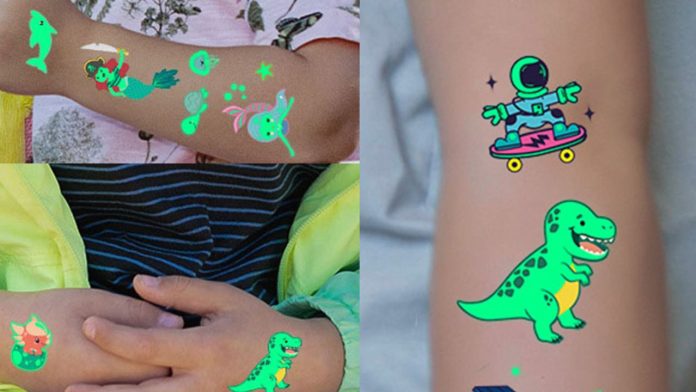Stickers, seemingly simple and small, have a remarkable power to influence consumer behavior and create emotional connections with customers. This article delves into the intriguing world of sticker psychology, exploring how these tiny adhesive wonders can impact consumers’ perceptions, emotions, and decisions. Let’s unravel the psychological aspects that make stickers so effective in branding and marketing. Moreover, one can click to visit the website to get a glimpse of some amazing stickers.
The Power of Visuals
Stickers as Visual Stimuli
Humans are inherently visual creatures, and stickers tap into this fundamental aspect of human cognition. The vibrant colors, eye-catching designs, and captivating visuals on stickers instantly draw attention and engage the viewer’s senses. As a result, stickers become a potent medium to convey messages and leave lasting impressions on customers.
Emotional Triggers
Stickers have the ability to evoke emotions, triggering positive feelings of joy, nostalgia, or excitement. When a customer receives a sticker that resonates with their personal preferences, memories, or aspirations, it strengthens the bond between the brand and the customer. This emotional connection can lead to increased brand loyalty and advocacy.
The Impact of Design Elements
The psychology of design plays a crucial role in sticker effectiveness. The choice of colors, shapes, typography, and imagery can influence how customers perceive and react to stickers. For example, warm colors like red and orange can evoke feelings of excitement and passion, while cooler colors like blue and green may elicit a sense of calm and trust.
Sticker Collectibility and Social Identity
The Thrill of Collecting
Humans have an innate desire to collect and hoard items of personal significance. Stickers have long been collectible items, appealing to people’s desire to complete sets or showcase their interests and affiliations. Brands can leverage this inherent behavior by creating collectible sticker series that encourage repeat purchases and customer loyalty.
Psychology of Scarcity
Limited edition or exclusive stickers can trigger the psychological principle of scarcity, making customers feel that they must obtain the sticker before it’s no longer available. This drives a sense of urgency and can lead to increased engagement and sales.
Expressing Identity
Stickers can serve as symbols of a person’s identity, interests, and beliefs. Whether it’s displaying fandom for a favorite band, supporting a cause, or representing a brand, stickers allow individuals to express themselves and communicate a part of their personality to the world. Brands can capitalize on this by designing stickers that align with their target audience’s values and self-image.
Belongingness and Inclusion
When individuals identify with a particular group or community, stickers can act as a way to reinforce a sense of belongingness and inclusion. By creating stickers that reflect shared interests and values, brands can foster a sense of community among their customers.
Sticker Activation and Engagement
Interactive Stickers
Stickers can be interactive, encouraging customers to engage actively with the brand. QR code stickers, for example, can lead customers to exclusive content or offers, fostering a sense of exclusivity and rewarding customer engagement. Augmented reality (AR) stickers can also provide an interactive and immersive experience, captivating customers and enhancing brand recall.
User-Generated Content (UGC)
Encouraging customers to share photos of their stickers in creative ways can lead to the generation of user-generated content. UGC not only showcases the brand’s reach but also acts as social proof, further influencing potential customers to trust and engage with the brand. User-generated content featuring stickers can also be repurposed by the brand for marketing campaigns, creating a virtuous cycle of customer engagement.
Sticker Memory Triggers
Association with Positive Experiences
Stickers can act as memory triggers, reminding customers of positive experiences with the brand or a particular event. When they encounter the sticker later, it rekindles the positive emotions associated with the brand, leading to increased brand recall and affinity.
Stickers in Branding and Marketing
Brand Recognition and Recall
Incorporating stickers with the brand logo and identity into product packaging or promotional materials enhances brand recognition. When customers encounter the brand’s logo repeatedly through stickers, it strengthens the brand’s recall value in their memory.
Word-of-Mouth Marketing
Stickers can become conversation starters, sparking interest and curiosity among others. When customers share stickers with friends and family, it triggers word-of-mouth marketing, expanding the brand’s reach organically.
Conclusion
The power of stickers lies not just in their physical presence but in their ability to trigger emotions, establish connections, and influence consumer behavior. Understanding the psychology behind stickers enables brands to use them strategically as versatile and effective marketing tools. As businesses continue to explore creative ways to engage customers, stickers remain a timeless and powerful means to leave a lasting impact on consumers’ hearts and minds. By tapping into the psychology of stickers, brands can harness their potential to build strong relationships, drive sales, and create a lasting brand impression in the minds of their target audience.











